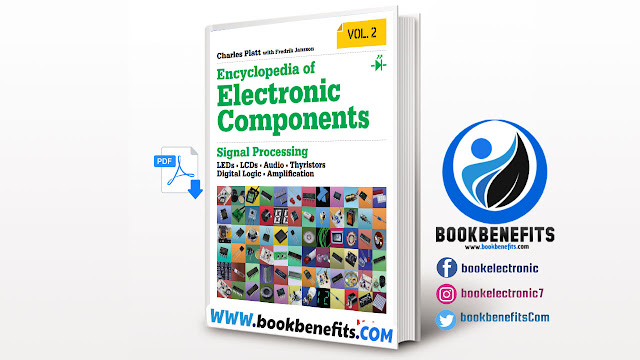Download Encyclopedia of Electronic Components Volume 2 PDF
Encyclopedia of Electronic Components Volume 2
Picture Of The Book :
About Of The Book :
This is the second of three volumes. Its purpose is to provide an overview of the most commonly used electronic components, for reference by students, engineers, hobbyists, and instructors. While you can find much of this information dispersed among datasheets, introductory books, websites, and technical resources maintained by manufacturers, the Encyclopedia of Electronic Components gathers all the relevant facts in one place, properly organized and verified, including details that may be hard to find elsewhere. Each entry includes typical applications, possible substitutions, cross-references to similar devices, sample schematics, and a list of common problems and errors. You can find a more detailed rationale for this encyclopedia in the Preface to Volume 1. Volume Contents Practical considerations influenced the decision to divide this encyclopedia into three volumes. Each deals with broad subject areas as follows. Volume 1 Power; electromagnetic devices; discrete Semiconductors The power category includes sources of electricity and methods to distribute, store, interrupt, convert, and regulate power. The electromagnetic devices category includes devices that exert force linearly and others that create a turning force. Discrete semiconductors include the primary types of diodes and transistors. A content listing for Volume 1 appears in Figure P-1. Volume 2 Thyristors (SCRs, discs, and triacs); integrated circuits; light sources, indicators, and displays; and sound sources Integrated circuits are divided into analog and digital components. Light sources, indicators, and displays are divided into reflective displays, single sources of light, and displays that emit light. Sound sources are divided into those that create sound, and those that reproduce sound. A content listing for Volume 2 appears in Figure P-2. Volume 3 Sensing devices The field of sensors has become so extensive, they easily merit a volume to themselves. Sensing devices include those that detect light, sound, heat, motion, pressure, gas, humidity, orientation, electricity, proximity, force, and radiation. At the time of writing, Volume 3 is still in preparation, while Volume 1 is complete and is available in a variety of forms.
Want to know how to use an electronic component? This second book of a three-volume set includes essential information on electronic parts for your projects—complete with photographs, schematics, and diagrams. You’ll learn what each one does, how it works, why it’s useful, and what variants exist. No
matter how much you know about electronics, you’ll find fascinating details you’ve never come across before.
Convenient, concise, well-organized, and precise Perfect for teachers, hobbyists, engineers, and students of all ages, this reference puts reliable, fact-checked information right at your fingertips—whether you’re refreshing your memory or exploring a component for the first time. Beginners will quickly grasp important concepts, and more experienced users will find the specific details their projects require.
Unique: the first and only encyclopedia set on electronic components, distilled into three separate volumes Incredibly detailed: includes information distilled from hundreds of sources
Easy to browse: parts are organized by component type Authoritative: fact-checked by expert advisors to ensure that the information is both current and accurate Reliable: a more consistent source of information than online sources, product datasheets, and manufacturer’s tutorials Instructive: each component description
provides details about substitutions, common problems, and workarounds Comprehensive: Volume 1 covers power,
electromagnetism, and discrete semiconductors; Volume 2 includes integrated circuits, and light and sound sources; Volume 3 covers a range of sensing devices.
Contents Of The Book :
1. SCR
2. diac
3. triac
4. solid-state relay
5. optocoupler
6. comparator
7. op-amp
8. digital potentiometer
9. timer
10. logic gate
11. flip-flop
12. shift register
13. counter
14. encoder
15. decoder
16. multiplexer
17. LCD
18. incandescent lamp
19. neon bulb
20. fluorescent light
21. laser
22. LED indicator
23. LED area lighting
24. LED display
25. vacuum-fluorescent display
26. electroluminescence
27. transducer
28. audio indicator
29. headphone
30. speaker
Information Of The Book :
Title: Encyclopedia of Electronic Components V.2 PDF
Language: English.
Version : 2th
Size: 10,57 Mb.
Pages: 316.
Format: PDF.
Author: Charles Platt

